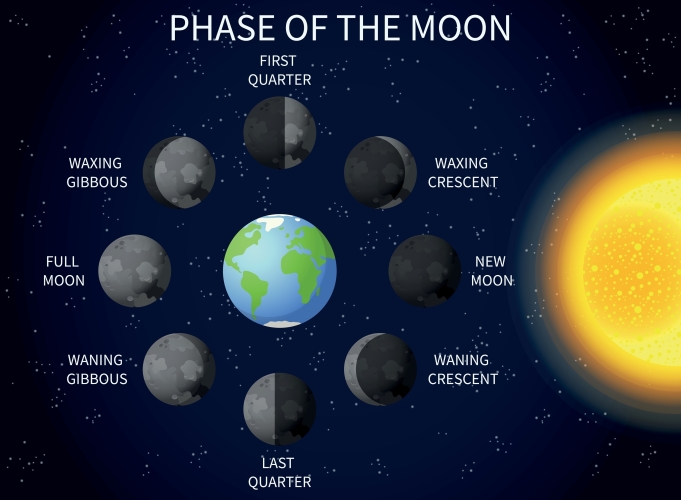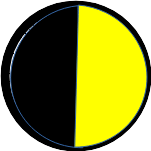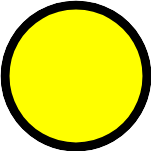You will often have looked up at the sky and seen the moon.
You may have noticed that it doesn’t always appear the same shape in the sky.
The moon itself stays the same shape but the Sun lights up different parts of it depending on where it is on its journey around the Earth.
It takes the moon around 28 days, which is called a lunar month, to orbit (travel around) Earth.
Look at the diagram showing the phases of the moon:

When the moon is between the Sun and the Earth, the Sun can’t shine on the section of moon facing the Earth, so we can’t see the moon.
We call this a new moon. Can you see this on the diagram?
The moon orbits the Earth in an anticlockwise direction and we start to see more of the moon as it moves around. The Sun can reach parts of the side of the moon that faces the Earth.
When we see a crescent shape after a new moon, it’s called a waxing crescent.
When the Sun reaches half of the side of the moon that we can see from the Earth, we call it a waxing half moon (sometimes called the first quarter).

A waxing half moon then turns into a waxing gibbous. A gibbous is nearly the whole circle.
What a wonderful name to remember!
A full moon is where the Sun can reach all of the side of the moon that we can see from the Earth.

After a full moon, we see a waning gibbous, then a waning half moon (sometimes called the last quarter) and finally a waning crescent.
Can you see how the names are the same but with waning in front of them instead of waxing?
It might help you to remember the order if you know that the word 'waxing' means to increase or get bigger, and the word 'waning' means to 'decrease' or get smaller.
After all of this, we get a new moon and the cycle repeats itself for another 28 days.
In this activity, you’ll be answering questions about the phases of the moon so make sure you study that diagram carefully before moving on.
Remember that you can look back at this page at any point by clicking on the red help button on the screen.








